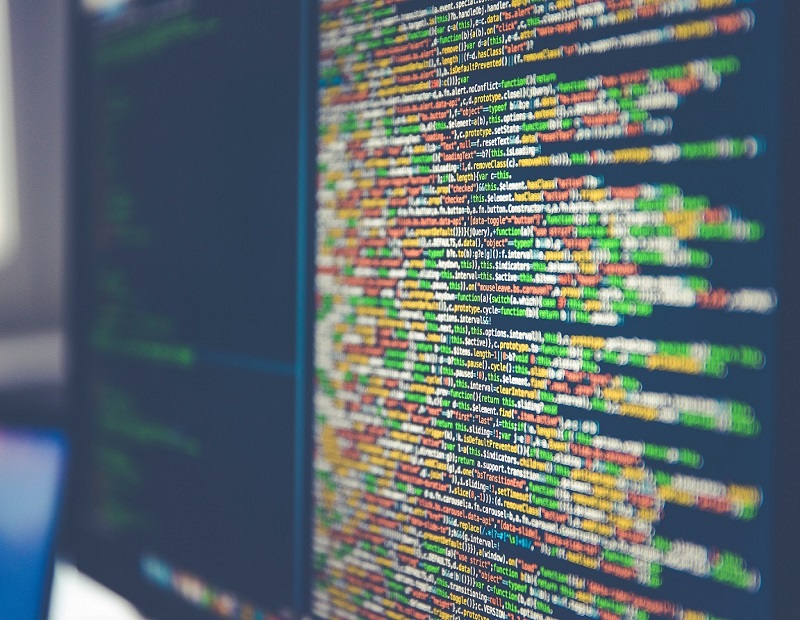Boosting Performance with Artificial Intelligence
Highlights of this month's CPE webinar, featuring insights from Yardi Energy Vice President Akshai Rao and consultant Matt Eggers.
By Joel Nelson

Photo by Markus Spiske on Unsplash
How can artificial intelligence (AI) benefit building operations?
For owners and managers of all property categories, that question is increasingly vital. With that in mind, CPE recently invited two experts to shed light on the promising but complex topic: Matt Eggers, a Yardi consultant and former vice president of Yardi Energy; and Yardi Energy Vice President Akshai Rao.
“Software is eating the world” and reshaping how people work and live; the various aspects of operating a building are no exception, Eggers noted. Many webinar participants and CPE readers say they plan to increase technology expenditures next year, but by 25 percent or less, which means building owners have to be smart about their investments. That’s where AI—the ability of machines and computers to perform cognitive functions normally associated with humans—comes in.
Optimizing building performance
AI “learns as it goes,” detecting patterns in conditions affecting energy consumption without being requested, then prescribing recommendations. Outside of buildings, AI’s well-documented feats include beating chess grandmasters, winning at “Jeopardy!” and creating a new portrait by assimilating thousands of photos.
The expansion of digital data availability (“AI’s food and oxygen,” as Eggers described it), computing power and software enhancements, and cheap storage have made AI viable for the corporate world. And businesses have reacted in force: About 80% of webinar participants said they’re using AI or plan to within three years.
Examples of how AI systems make a building more efficient include optimizing the setpoint (the target temperature) every 30 seconds to ensure comfort without using more energy than necessary; and learning from their past performance to react to changes in occupancy, weather and other factors.
AI systems’ ability to perform continuous small building temperature adjustments translates into better performance through lower utility and equipment maintenance costs; increased tenant comfort that reduces service calls and increases retention; regulatory compliance; and investor satisfaction.
Eggers and Rao, industry experts who frequently share their expertise in real estate industry publications and events, cited case studies of SL Green Corp. and LBA Realty, real estate operators that used energy optimization software to reduce HVAC spend, improve ENERGY STAR® scores and achieve millions of kilowatt-hours of energy savings.
(The free, hour-long webinar is available on demand. Watch it now.)
Complementing, not replacing, humans
Eggers and Rao dispelled some misconceptions about AI. For example, things that are not AI, but frequently mistaken for it, include dashboards, internet of things sensors, real-time data analysis and other tools that only collect data or can’t learn and improve on their own.
Refuting the perception that AI systems are difficult and costly, Eggers said, “For modern buildings, these are low-cost solutions that pay back quickly and don’t need to be complicated.” In fact, he said, they’re easier to implement and maintain than control systems that require complex programming and are hard to update or transfer to new employees. And AI systems can be implemented incrementally to produce small initial savings that build the foundation for a fully automated portfolio.
Perhaps the biggest misconception is that AI replaces humans and assumes control, when in fact, “AI systems work best when coupled with smart, expert humans. AI technologies can make you even more effective than you are today,” Eggers said. By making decisions based on thresholds set by human operators. AI provides an “army of virtual robots and analysts” that help workers do their jobs, relieve manual tasks, allow more time to strategize, lead teams and catch up on to-do lists. By continuously making tiny adjustments, AI saves energy and money while creating more comfort than either AI or humans working alone can do.
What’s more, Rao added, AI systems can be shut off as necessary, enabling operators to “tune the AI system and direct the ‘robots’ in ever-finer details.”
Building of the future
The future of AI best-use cases combines a single-platform, cloud-based system that manages global portfolios and solves problems by making changes according to the human operator’s thresholds—along with an energy strategy that suits the organization. The fact that maintenance, repair and operating (MRO) supply and utility costs account for about 60% of a building’s controllable expenses makes commercial and residential properties prime candidates for improvement.
Industry trends are following the numbers. The last several years brought massive innovation and investment in reducing MRO spend through automated invoice processing, procurement, vendor management and payments. Rao believes the industry is poised to further accelerate progress in managing and reducing energy spend in the next 5-7 years.
Utility data extraction, benchmarking and trends coupled with real-time demand tracking, alerts and scheduling to catch and correct spikes and outliers more quickly will be a good low-investment strategy. Those that want higher-investment, higher-return options will look for solutions that extend into AI innovation to proactively detect system faults and optimize a building’s energy usage through automated heating and cooling.
“A cohesive energy strategy can increase rents, lower costs and increase asset value—and no other initiative in the industry can make all three happen,” Rao said. “We envision buildings operating at a fraction of their current energy, with large buildings sometimes exporting energy to the grid.
“AI systems can offer higher returns in a competitive market. It’s an exciting future.”
Learn how Yardi Pulse can help you gain better control over energy expenses.







You must be logged in to post a comment.